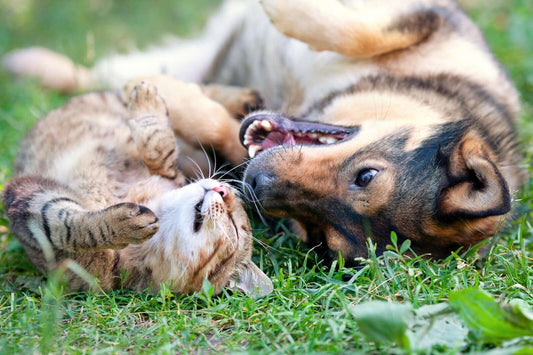While monsoon provides relief from the rising temperatures of the summer months, it comes with problems of its own. The inevitable rains often interfere with our day-to-day plans as well as bring many hygiene issues.
This post will talk about all the monsoon diseases that your furballs are vulnerable to, and how to protect them from these.

Kennel Cough
Kennel cough is the popular term for a canine respiratory disease called infectious tracheobronchitis. It is highly contagious and induces strange, choking sounds. Although there are many possible causes of kennel cough in dogs, including contamination, some of the major ones include sensitivity to dust and cold temperatures, both of which are highly probable during monsoon.
Symptoms of kennel cough:
Incessant, forceful coughing with a honking sound is the first and most obvious symptom of kennel cough. Other symptoms include:
Runny nose
Watery eyes
Sneezing
Loss of appetite
Mild fever
How to protect your pet from kennel cough?
Kennel cough is caused by bacteria of the Bordetella genus. Therefore, the best prevention is the bordetella bacterium vaccine, which most dogs receive before they turn 6 months old. You can give them booster shots too.
Due to the contagious nature of kennel cough, it’s also advised to prevent your dog from mingling with larger dog groups, keeping them indoors, and avoiding them from getting wet.
Ear Infection
A dog’s ears can retain moisture quickly if they remain wet for longer periods, resulting in the growth of bacteria and yeast, and eventually, ear infections.

Symptoms of ear infection:
Here are some signs that indicate your canine companion has developed an ear infection:
Constant head-shaking and scratching affected ear
Pain and itchiness in their ears
Dark-colored discharge from the affected ear
Scabs in the affected ear
Redness and swelling in the ear canal
How to protect your pet from ear infection?
Since excess moisture is the prime cause of all canine ear infections, you need to dry their ears thoroughly after a bath, swim, or rain incident.
While paper or cotton towels are safe to use for their outer ear, it is best to use an absorbent gauze to wipe their ear canal. It will also prevent the risk of any fibers left behind while cleaning. Do also remember to check your pet’s ear dryness by swabbing the ear with a cotton bud every night.
Intestinal Parasites
Is your doggo keen on drinking from the water puddles on the streets? Well, then they run the risk of being infected by intestinal parasites. There are many types of parasites that could infect your pet’s intestines but the common ones thrive in the moist, humid environment of monsoon months.
Symptoms of intestinal parasites:
If your furball has intestinal parasites, here are symptoms to watch out for:
Dehydration
Lethargy
Vomiting
Diarrhea
Poor condition of fur coat (clump formation, loss of hair)
Constant pain in the abdominal area
Pot-bellied appearance
Blood in stool
How to protect your pet from intestinal parasites?
Worms can cause substantial damage to your pet’s health. To protect them from these parasites, here’s what you can do:
Avoid leaving them alone outdoors, even if it’s just your lawn or garden
Keep an eye on anything they put their mouth to when outside
Discourage them from drinking water from puddles using the reward-punishment approach
Keep them hydrated at all times, especially before taking them out
Fungal Dermatitis
Also referred to as yeast or malassezia dermatitis, fungal dermatitis is an inflammatory skin problem found in both dogs and cats, caused by the fungus malassezia pachydermatis. Your pet is more likely to catch them in monsoon, especially when they go out to play in the garden or streets and come back wet as these fungi thrive in humidity.
Symptoms of fungal dermatitis:
Fortunately, it’s fairly simple to diagnose fungal dermatitis in your pet as all its symptoms are easily visible. Here are some signs that can determine whether or not your pet has it:
Redness or irritation in the skin
Skin inflammation
Flake or crust deposition on the skin (particularly around their nails, armpits, skin folds, and anal area)
Frequent itchiness
Possibility of ear infection
How to protect your pet from fungal dermatitis?
Most of the symptoms above often occur on the skin around your pet’s paws. Therefore, to protect them from fungal dermatitis, it is essential to dry their paws properly after they’ve spent time outside. If you own a long-haired breed, the same rule applies to their thick, long fur coat as well. For more information, you can check our article on how to keep pet dry during monsoon.

Be extra careful of your pet’s activities in the rainy season to ensure their well-being and you’re sure to have a safe and joyful monsoon!











